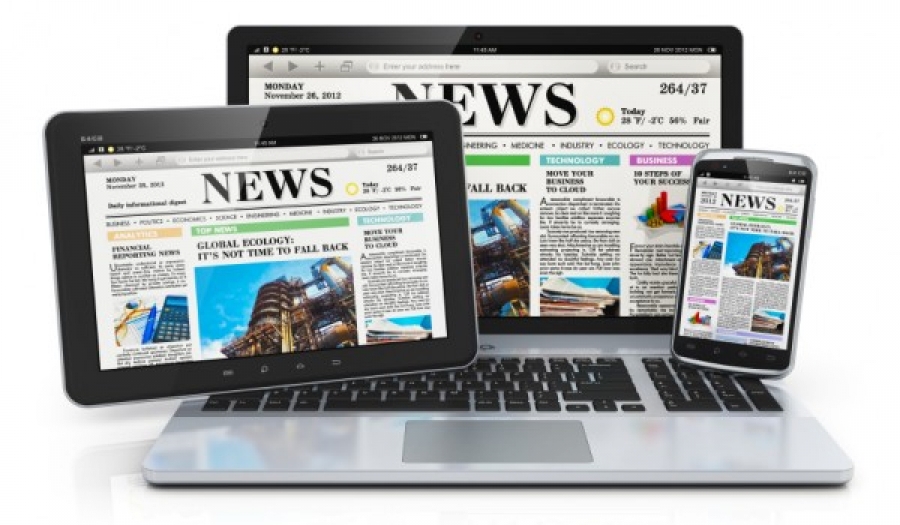The 3-Minute Rule for Popular News
The 3-Minute Rule for Popular News
Blog Article
The 2-Minute Rule for Popular News
Table of ContentsThe Ultimate Guide To Popular NewsGetting My Popular News To WorkFacts About Popular News RevealedAll About Popular News
Age is likewise an aspect in the means people watch the function of social media sites. More youthful social media sites information customers are more probable to claim it has actually affected their understanding right. About fifty percent of social media sites information customers ages 18 to 29 (48%) claim information on social media sites makes them much better notified, compared to 37% of those 30 to 49, 28% of those 50 to 64, and 27% of those 65 and older.Reporters consider news worths when figuring out whether or not to cover an event or statement. Arguably the most essential aspect of newsworthiness is whether or not the news product being communicated effects an information outlet's target market.
Distance is essential. Journalists have an interest in things that affect their areas. Research on a state's brand-new tax obligation code likely won't create the exact same rate of interest throughout state boundaries. Periodically professionals can aid localize a larger national tale that influences more than simply a city or state. In these instances, it is necessary to be looking for possibilities where topic professionals can give insight or where comparable projects may be occurring in your area.
If you are publishing relevant study, loophole in MarComm before the write-up being released to make sure that the pitch can emphasize the newest element of the story: the publication of the study. Events and announcements that involve high-profile figures are more most likely to create media insurance coverage. Sees from nationwide figures often require months of preparation due to anticipated community interest.
The Only Guide to Popular News

Human passion elements can add news value to other stories that may seem lacking in the various other values. The uniqueness or curiosity of a situation can aid influence whether a news electrical outlet is most likely to cover a tale. While this is not an extensive checklist, checking to see if your story or occasion has these qualities prior to calling us will certainly aid you establish which components hold one of the most information worth.

Get This Report on Popular News
There is also considerable proof that more customers could begin to spend for news in the futureif publishers can understand them and serve them well. Half of those that do not pay for news proactively seek news and appear like subscribers in different means. Popular News. And nearly 2 in 10 of those that do not subscribe to information currently show they are inclined to begin to pay in the future
We then ask a collection of inquiries to identify whether individuals pay for certain sorts of news sources. We asked individuals to call the sources they make use of most oftenwhether they pay for them or nothow they utilize them, the details things they think about important regarding them, and some relevant inquiries about the cost and value of that resource.
Individuals are attracted to information generally for two factors over others: A need to be educated citizens (newspaper subscribers in particular are very encouraged by this) and because the publication they subscribe to excels at covering certain topics regarding which those customers specifically care. click this site While there are a host of factors, the No.
Greater than 4 in 10 likewise mention the reality that good friends and family members sign up for the very same item. More than a third of individuals state they originally subscribed in reaction to a discount or promotion. In print, people also are relocated greatly to register for obtain vouchers that conserve them cash, something that has untapped effects in electronic.
A Biased View of Popular News

We asked everyone that told us they have a regular cost-free source of news just how likely they would be to pay for it. Greater than a quarter (26 percent) state they would certainly go to least somewhat likely to begin paying for itand 10 percent are extremely or exceptionally likely. These Go Here most likely payers tend to be news hunters, and they likewise have a tendency to be people who already pay for a news subscription along with the resource they adhere to absolutely free.
Of those who do pay, 54 percent register for newspapers in print or electronically, which represents 29 percent of Americans generally. Many of them buy a print magazine in addition to their paper and pay for 2 to 4 information sources in overall, some also much more. And while 53 percent are veteran subscribers (5+ years), more than a quarter (27 percent) have actually acquired their paper subscription within the past year.
Few print customers believe it likely they will certainly change to a digital-only subscription in the future, and over half of those that choose digital have actually never paid for a print variation of the exact same resource. Popular News. Totally 75 percent of newspaper payers state they mostly reviewed the paper in print, while 21 percent are primarily electronic individuals, and 4 percent define themselves as equally split
Report this page